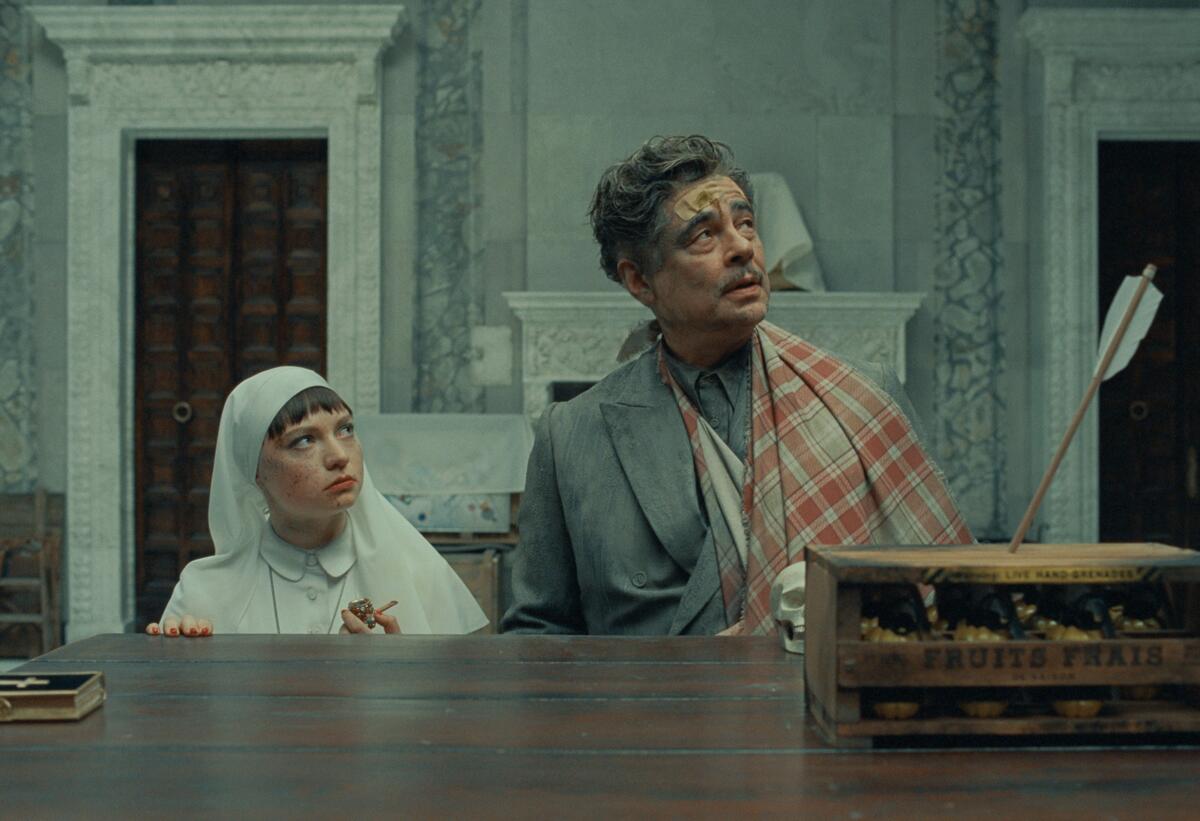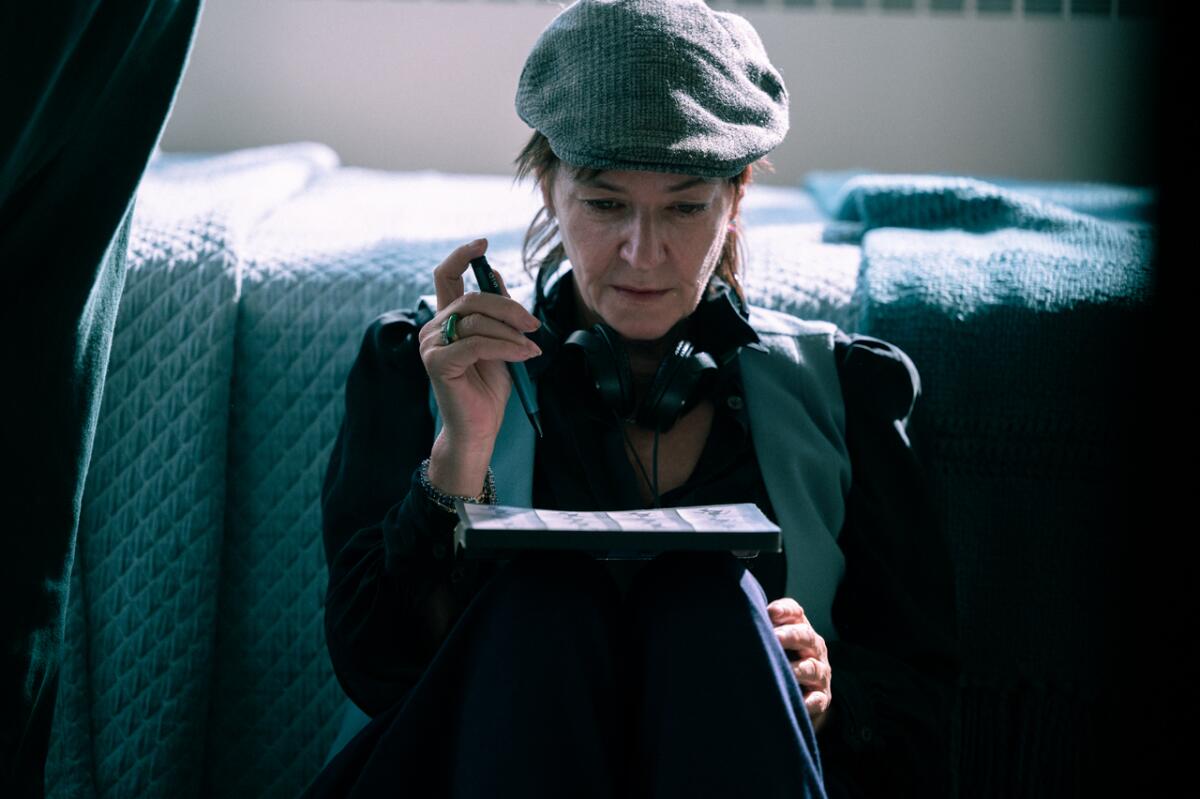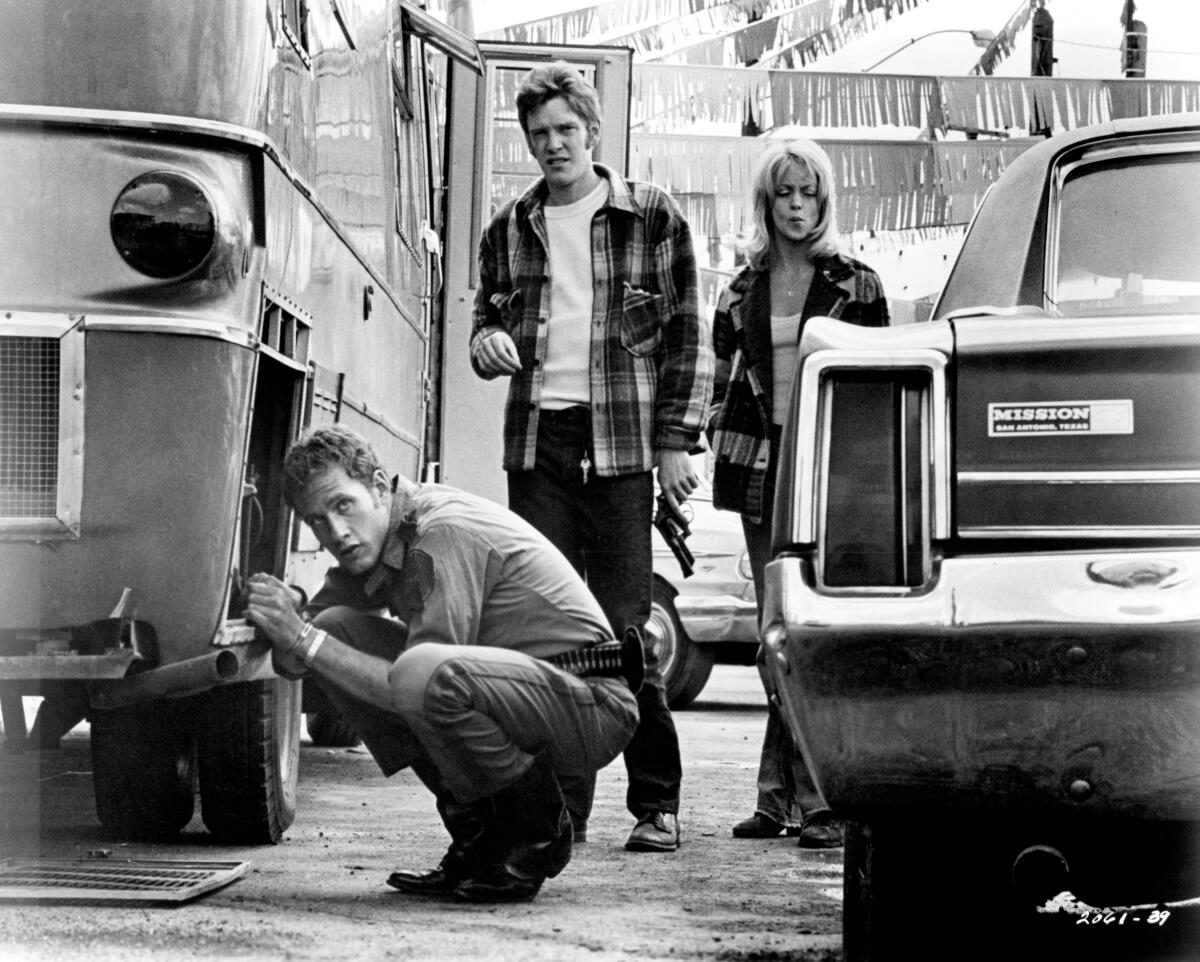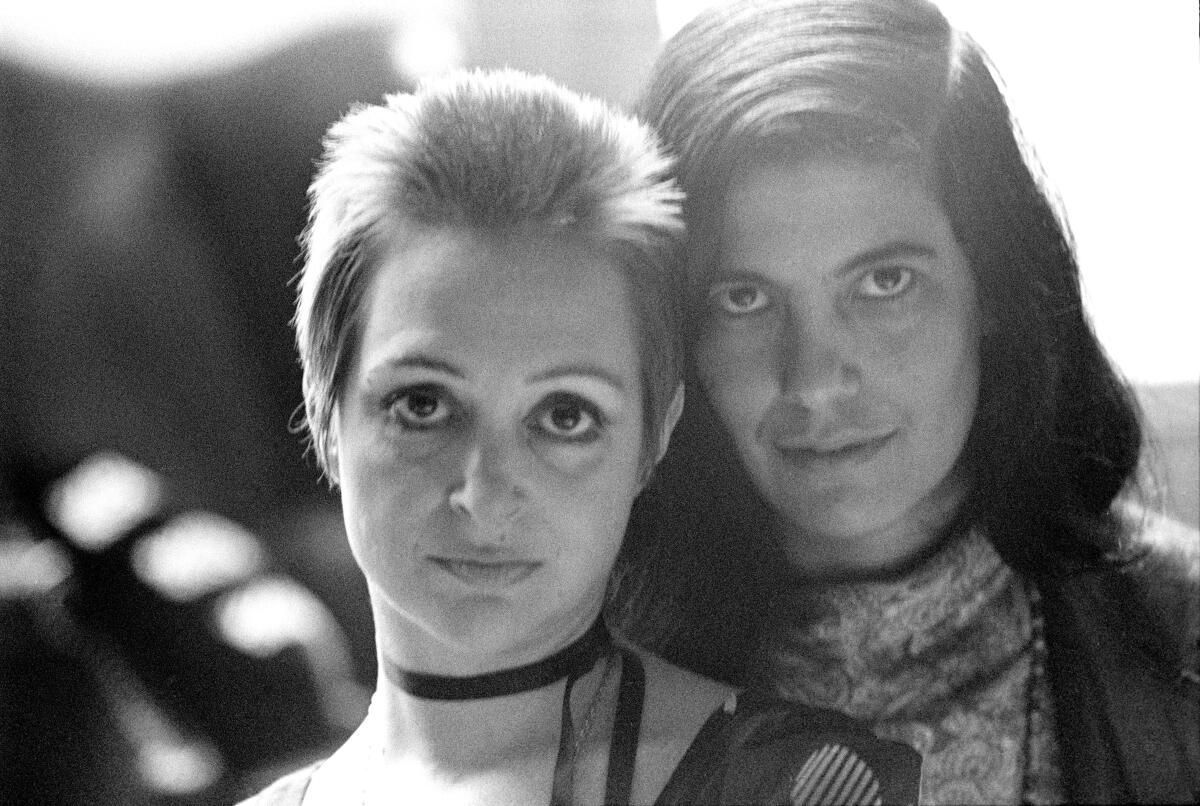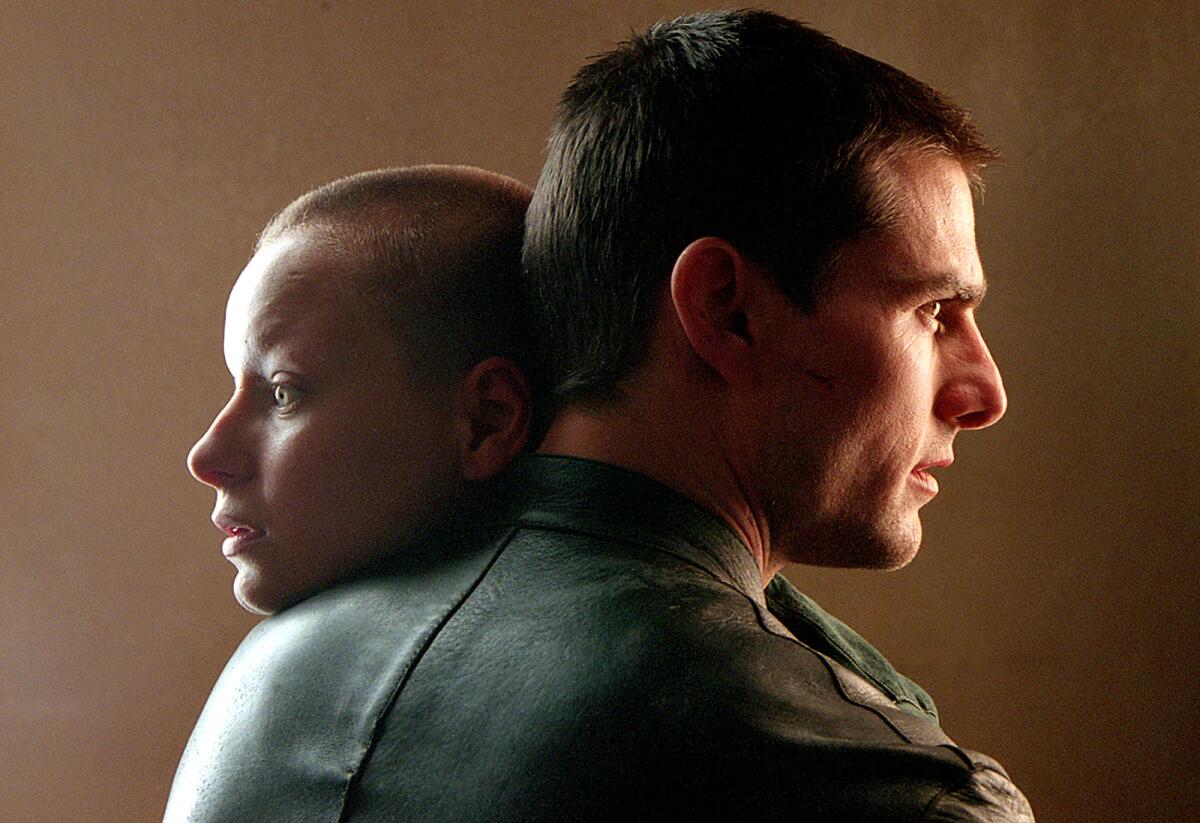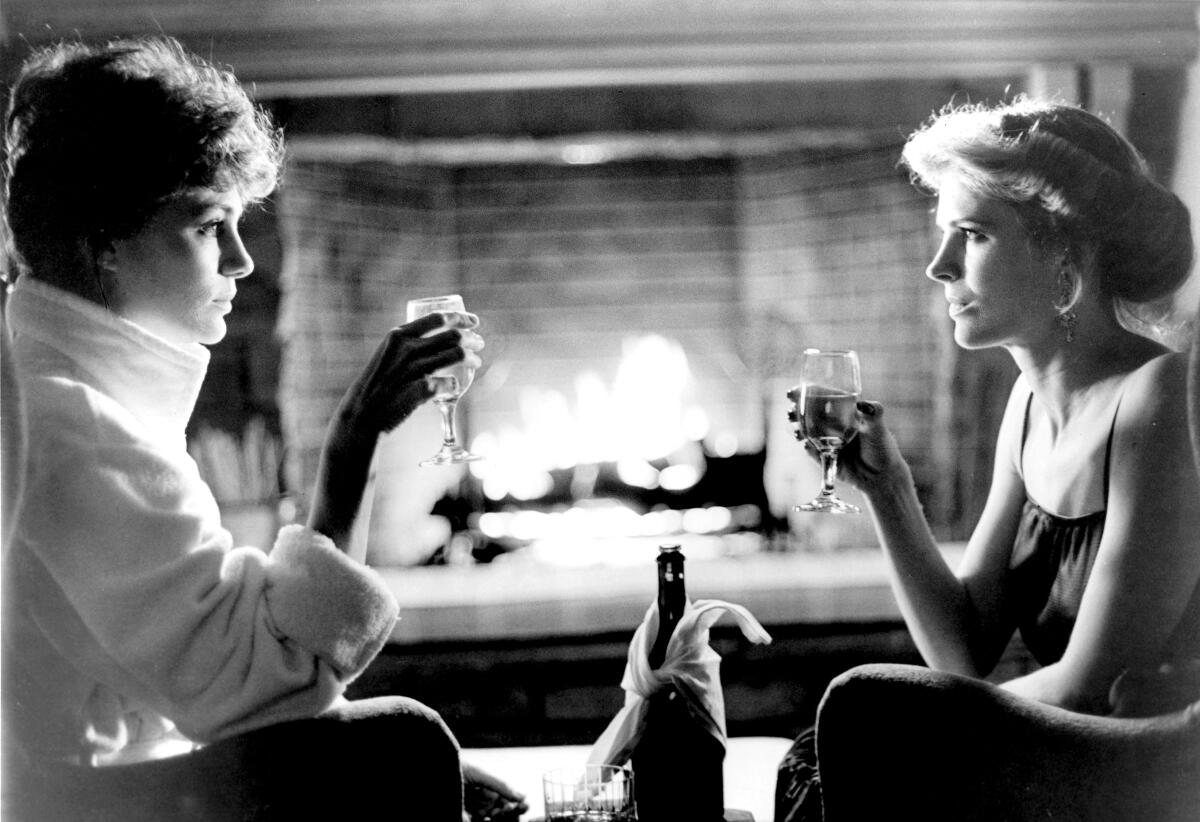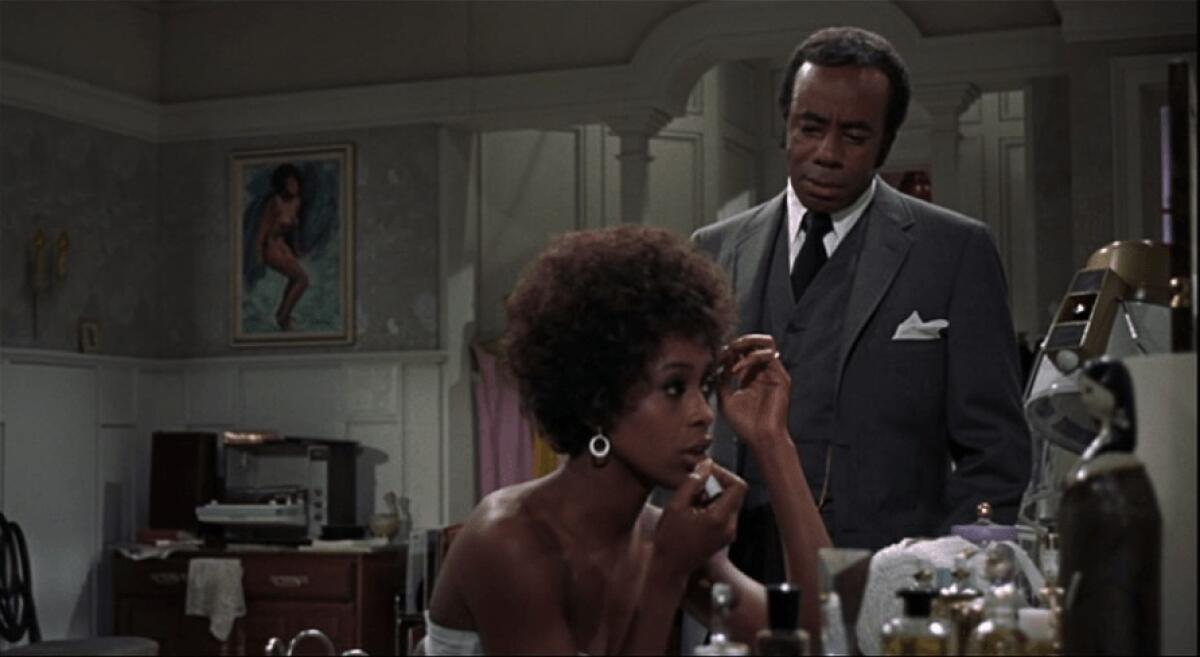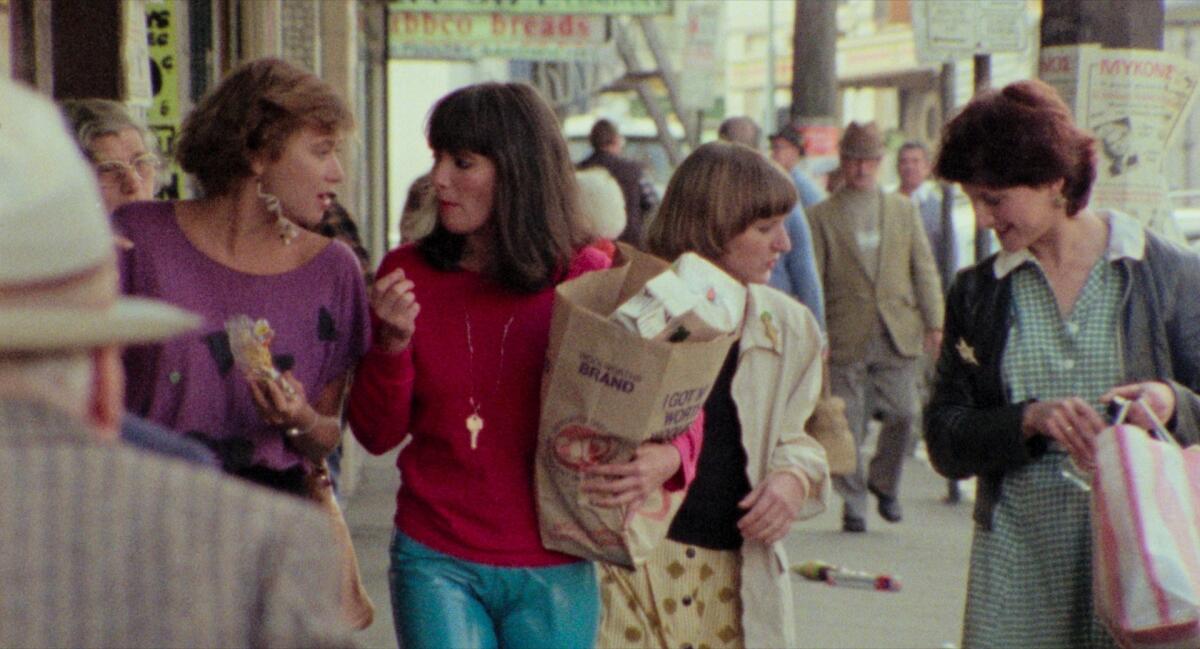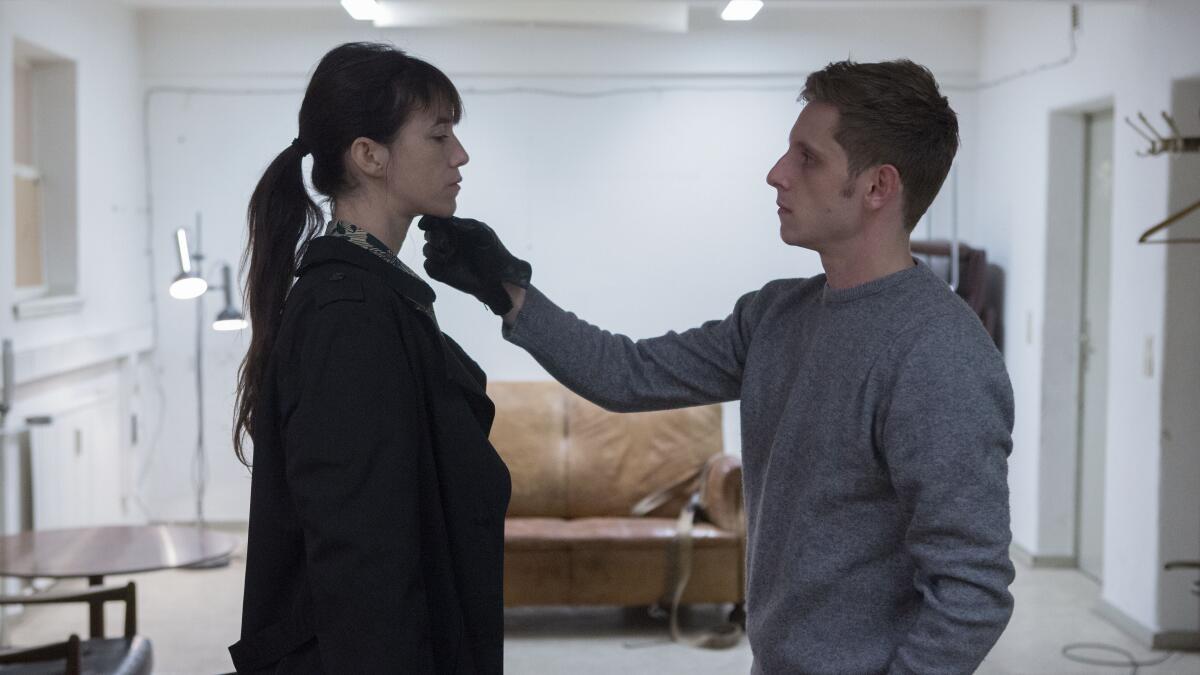‘Bleak Week’ returns, plus the week’s best movies in L.A.
Hello! I’m Mark Olsen. Welcome to another edition of your regular field guide to a world of Only Good Movies.
Following its recent premiere at the Cannes Film Festival, “The Phoenician Scheme,” the new film by Wes Anderson, opens in Los Angeles this weekend. Each new Anderson picture still feels like something of an event, simply because it is so fun to see what he is up to this time, what idiosyncratic subset of the world will he explore and make his own.
Personally, I have been taken with how densely packed his last few films have become. “The French Dispatch” and “Asteroid City” had a layered approach to storytelling that took some time to fully unpack. So it is likely “The Phoenician Scheme” has yet to reveal itself, in need of some extended unraveling of its energetic story of an ambitious 1950s international businessman, Anatole “Zsa-zsa” Korda (Benicio del Toro, who we spoke to for our summer preview), and his estranged daughter, Liesl (Mia Threapleton), on an a series of business deals. The cast, typical for Anderson, is packed, also including Michael Cera, Scarlett Johansson, Jeffrey Wright, Mathieu Amalric, Tom Hanks, Bryan Cranston, Richard Aoyade, Riz Ahmed, Charlotte Gainsbourg and many more. (Never fear, Willem Dafoe and Bill Murray are in there somewhere.)
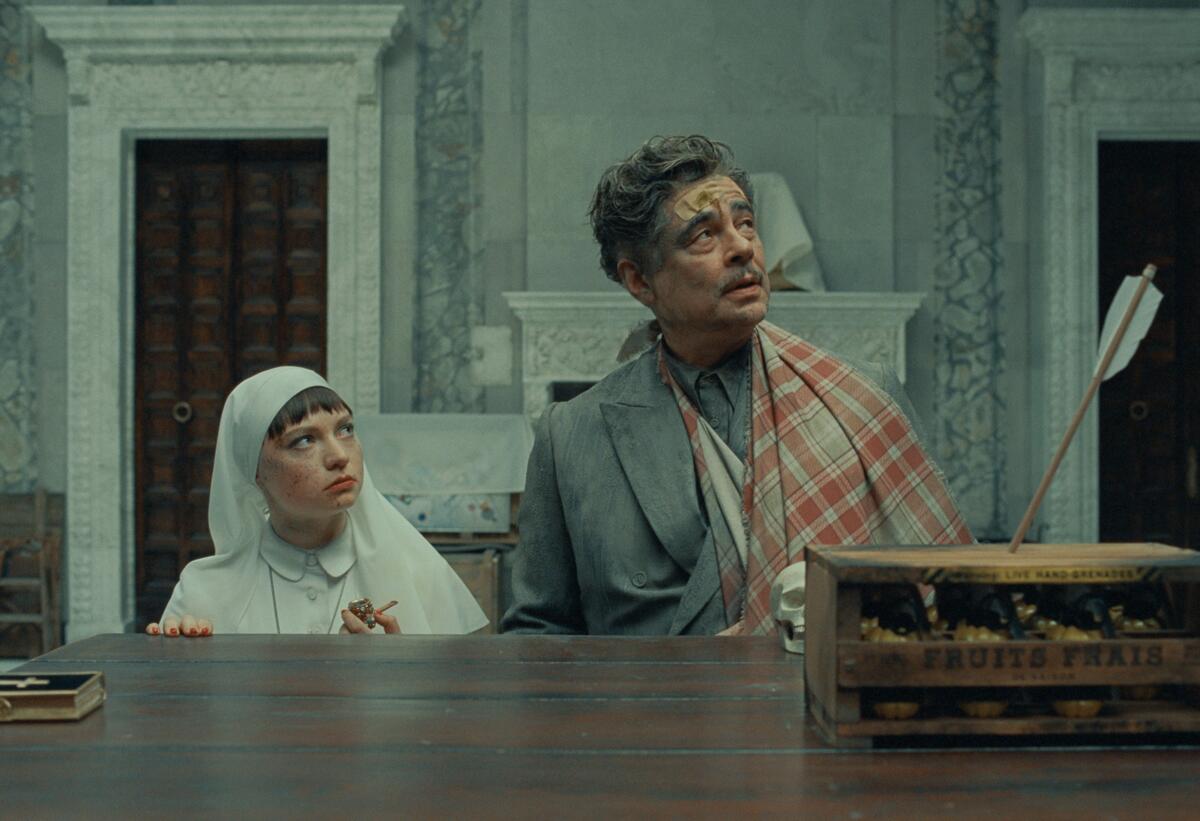
Mia Threapleton and Benicio del Toro in the movie “The Phoenician Scheme.”
(TPS Productions / Focus Features)
In a review of the film, Amy Nicholson wrote, “Lately, Anderson has been on a tear of using his perfectionist aesthetic to defend the act of ambition itself — to honor artisans who create masterpieces in a world of philistines. The only thing he loves more than a carved credenza (and here, they’re decorated with hieroglyphics) is the craftsperson who made it and the aesthete who bought it, instead of settling for something disposable. I was never a fan of Anderson’s until ‘The Grand Budapest Hotel’ clicked him into focus. It was hard to believe he knew what he was talking about when his earlier movies tried to sell us on love between human beings. But a hotelier’s love of his linens? That I’ll buy.”
Amy added, “It’s not that you have to believe that there is a force out there more powerful than Zsa-zsa, or heck, even money itself. But if that doesn’t move you, at least Anderson deserves reverence for negotiating how to get all these A-list talents to act in his movie for peanuts. He’s managed to build yet another dazzler, a shrine to his own ambition and craft. And while it sometimes feels a bit drafty in the corners, the accomplishment itself is plenty.”
‘Bleak Week’ goes worldwide
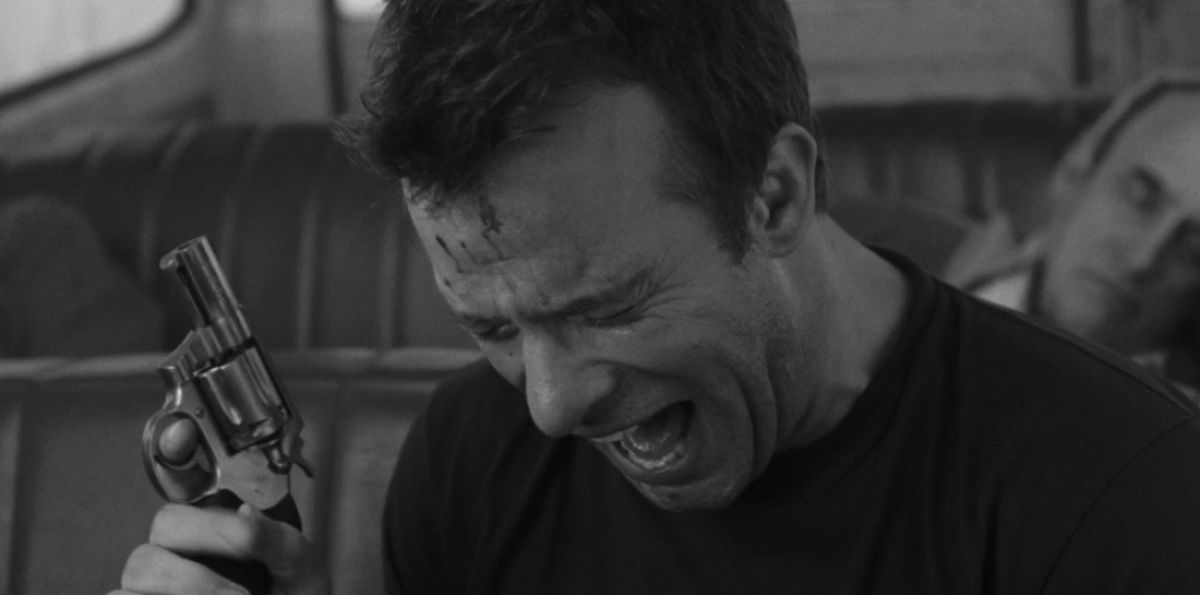
Thomas Jane in an image from the black-and-white director’s cut of Frank Darabont’s 2007 horror movie “The Mist,” coming to “Bleak Week.”
(MGM)
The fourth edition of the American Cinematheque’s “Bleak Week: Cinema of Despair” program begins Sunday with screenings at all three of its local venues through Saturday, June 7. Having already expanded to the Paris Theatre in New York last year, “Bleak Week” is now spreading to several more cities and venues: the Hollywood Theatre in Portland, Ore.; the Music Box Theatre in Chicago; the Texas Theatre in Dallas; Trylon Cinema in Minneapolis; Coolidge Corner Theatre in Boston; and the Prince Charles Cinema in London.
“We look to expand our never-ending film festival whenever possible,” said Grant Moninger, artistic director of the American Cinematheque, via email, of the program’s ongoing expansion.
This year’s series will open with a 35mm screening of Akira Kurosawa’s 1952 “Ikiru” at the Egyptian Theatre introduced by Bill Hader. French filmmaker Claire Denis will be present for screenings of a handful of her titles, including a 35mm presentation of 2001’s “Trouble Every Day” with a Q&A moderated by Barry Jenkins.
Brady Corbet and Mona Fastvold will be present for a tribute, including films they have made together and Corbet’s separate acting work. To be screened: Michael Haneke’s “Funny Games,” Lars von Trier’s “Melancholia,” Fastvold’s “The World to Come” and Corbet’s “The Childhood of a Leader” and “Vox Lux.”
Other “Bleak Week” highlights include John Hillcoat’s 2005 “The Proposition” with a Q&A with the filmmaker and cast, Michael Curtiz’s 1950 “The Breaking Point” in 35mm and Carl Theodor Dreyer’s 1943 “Day of Wrath” screened from a nitrate print.
What may once have seemed a slightly cracked idea has grown into one of the Cinematheque’s signature programs. And there is no end in sight.
“After year one, which had 33 films, we had the worry that maybe we would have no titles left for next year — if there even was a second edition,” said Chris LeMaire, senior film programmer, via email. “But each time we start programming the next ‘Bleak Week,’ there seem to be endless possibilities.”
“Our lineup this year in L.A. has 55 films and we probably cut another 50 titles from our initial list,” added LeMaire. “Across all the venues, ‘Bleak Week’ includes over 100 titles this year, from all corners of the world and all eras of cinema history, from as early as 1919 to 2025. We’re never going to run out because many of the greatest films deal with the human condition, which naturally leads to some difficult truths.”
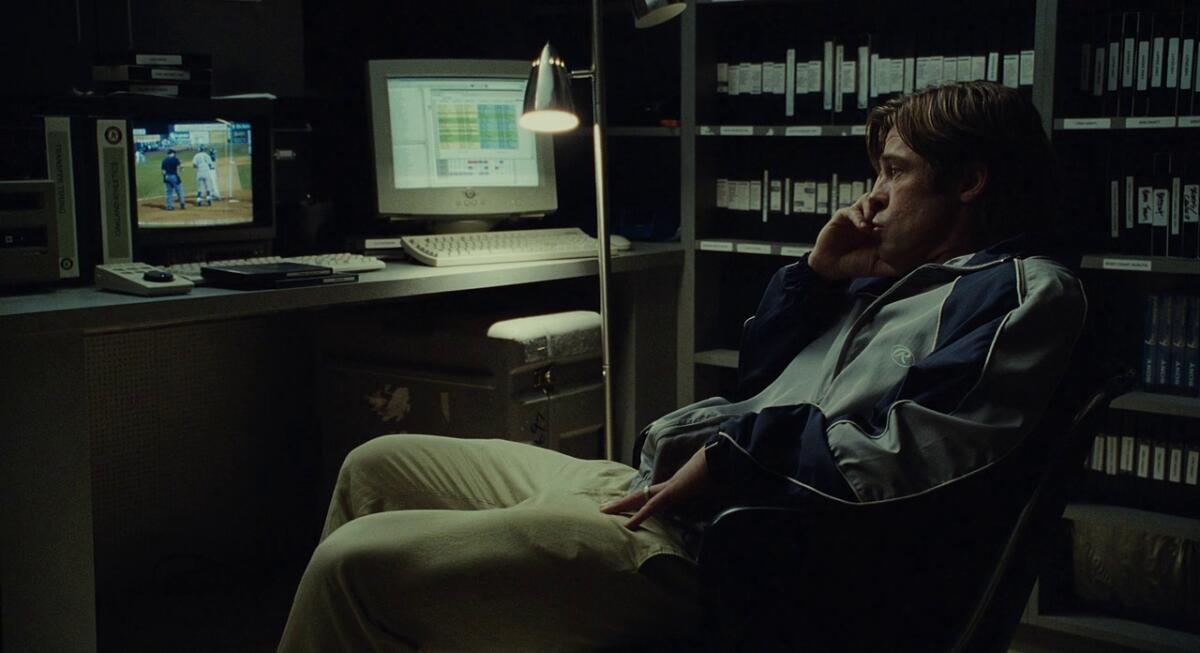
Brad Pitt in the movie “Moneyball.”
(Sony Pictures)
Alan Arkin’s 1971 “Little Murders” will screen in 35mm with a Q&A with star Elliott Gould moderated by screenwriter Larry Karaszewski. A screening of the black-and-white director’s cut of 2007’s “The Mist” will be followed by a Q&A with filmmaker Frank Darabont and actor Thomas Jane. Filmmaker Costa-Gavras and producer Michèle Ray-Gavras will be present for a double-bill of 1982’s “Missing” and 1970’s “The Confession.” Actor Gabriel Byrne will be at a 35th anniversary screening of Joel and Ethan Coen’s 1990 “Miller’s Crossing.”
I will be moderating a Q&A with Gus Van Sant following a screening of “Last Days.” There will also be the U.S. premiere of a 4K restoration of “Christiane F.” and the West Coast premieres of 4K restorations of “Withnail and I,” “Forbidden Games,” “The Sweet Hereafter” and “Happiness.” (A Q&A for “Happiness” will feature performers Lara Flynn Boyle and Camryn Manheim, moderated by Vera Drew.)
Where downbeat entries like Mark Romanek’s “Never Let Me Go,” Ryan Coogler’s “Fruitvale Station,” Narcisco Ibáñez Serrador’s “Who Can Kill A Child?” or Elem Klimov’s “Come and See” more obviously fall within the thematic concept of “Bleak Week,” titles such as Bennett Miller’s “Moneyball” or Boaz Davidson’s “The Last American Virgin” do not make such an apparent fit.
“We work outside of academic and algorithmic models,” said Moninger. “This allows for an emotional reaction to films and a more expansive ‘Bleak Week’ program. The festival is a tapestry of bleak moments and feelings that can be presented in all types of cinema, including the occasional comedy. We are not measuring the hopelessness of each film but creating something by bonding together a wide variety of challenging, unpromising cinema, which I hope builds to something positive.”
Ivan Dixon and ‘The Spook Who Sat by the Door’

An image from 1973’s “The Spook Who Sat by the Door,” directed by Ivan Dixon.
(United Artists / Photofest / UCLA Film & Television Archive)
This weekend the UCLA Film & Television Archive will be hosting “‘Going My Own Way’ Celebrating Ivan Dixon,” a tribute to the actor and filmmaker, including the local premiere tonight of a new 35mm print of the restoration of his 1973 film, “The Spook Who Sat by the Door.”
The film tells the story of the first Black CIA officer (Lawrence Cook), who leaves his token position at the organization to use what he learned there to train a Black guerrilla fighting force in Chicago. “The Spook Who Sat by the Door,” which was added to the National Film Registry in 2012, had a truncated release with it first came out due to its revolutionary politics, with some accounts that the FBI became involved in suppressing it.
“It’s just one of the most powerful meditations on the meaning of freedom that I’ve ever seen,” said UCLA programmer Beandrea July. “It’s so nice to see a movie that really knows what it is and doesn’t apologize for it. It doesn’t equivocate, it’s not trying to explain itself to people who aren’t interested in really understanding. It’s so satisfying to watch because it’s like finally someone actually speaks to the thing with the same oomph that the thing demands.”
On Saturday, along with the second screening of the film, there will be a showing of Christine Acham and Clifford Ward’s 2011 documentary “Infiltrating Hollywood: The Rise and Fall of ‘The Spook Who Sat by the Door,’” which examines the long saga of the film, its reception and release.
Acham will be present at screenings throughout the weekend as will Nomathande Dixon, Ivan Dixon’s daughter, as well as Natiki Hope Pressley, daughter of Sam Greenlee, author of the book on which the film is based.
Dixon, who died in 2008 at age 76, was best known for his role as Sgt. James Kinchloe on TV’s “Hogan’s Heroes,” a part he left before the show had ended to move behind the camera and begin a prolific career directing for television.

Ivan Dixon and Abbey Lincoln in the movie “Nothing but a Man.”
(Criterion Collection)
Also screening will be the 1964 film “Nothing but a Man” starring Dixon and directed by Michael Roemer, who died just last week at age 97. The film tells the story of racial tension in a small town; Dixon considered the film his favorite of his performances. The film will be paired with a 1960 episode of “The Twilight Zone” starring Dixon and Kim Hamilton.
The series will conclude Sunday with two pieces Dixon directed for television, 1983’s “Frederick Douglass: Slave and Statesman,” starring “Blacula’s” William Marshall, and an adaptation of Philip Hayes Dean’s “The Sty of the Blind Pig” starring Mary Alice and Scatman Crothers.
The Dixon family lived for many years in Altadena. What was once their home was destroyed in the January fires, a circumstance that gives the weekend an even greater emotional resonance.
“It’s special for the family because his wishes were never to have a memorial,” said Nomathande Dixon. “And this is something that feels like a tribute to him in our hometown of L.A. So we’re very appreciative of that. And I think he would’ve been thrilled.”
Points of interest
‘Michael Clayton’ in 35mm

George Clooney, left, and Sydney Pollack in the movie “Michael Clayton.”
(Myles Aronowitz / Warner Bros. Pictures)
At Vidiots on Saturday will be a 35mm screening of 2007’s “Michael Clayton” with writer-director Tony Gilroy in person. The film marked the feature directing debut for Gilroy, who previously had a successful career as a screenwriter and has gone on to be showrunner of the recent series “Andor.”
George Clooney stars in the film as a fixer for a powerful New York City law firm. He finds himself drawn into an already complicated situation involving defending an agricultural conglomerate in a class-action lawsuit when one of the firm’s top lawyers (Tom Wilkinson) has a nervous breakdown.
The film was nominated for seven Academy Awards, with Tilda Swinton winning for supporting actress for her role as the conglomerate’s chief counsel. In his original review of the film, Kenneth Turan wrote, “Watching this film makes you feel that Gilroy, best known for writing credits on all three ‘Bourne’ films, has poured the energy pent up during a decade and a half in Hollywood into this strong and confident directorial debut about desperate men searching for redemption in a cold and ruthless world. … As a director, Gilroy has an unmistakable instinct for the emotional jugular and a breakneck storytelling style that pulls you through his movie, no stragglers allowed.”
Sofia Coppola and Kirsten Dunst with ‘The Virgin Suicides’

Leslie Hayman, left, Kirsten Dunst, A.J. Cook and Chelse Swain in “The Virgin Suicides.”
(Paramount Classics)
On Sunday afternoon, the Academy Museum will screen Sofia Coppola’s 1999 feature debut, “The Virgin Suicides” with the filmmaker and star Kirsten Dunst in person. (There will also be a signing for Coppola’s new book of Corinne Day’s on-set photos from the film.) The story of five sisters in 1970s Michigan who all die by suicide, the film set the stage for Coppola’s gently incisive explorations of female interiority and a recurring collaboration with Dunst.
In his original review of the film, Kevin Thomas wrote, “Sofia Coppola shows an impressive maturity and an assured skill in adapting Jeffrey Eugenides’ novel ‘The Virgin Suicides’ to the screen for her directorial debut. As the title suggests, it’s a challenging undertaking that requires a smooth passage from pitch-dark humor to a stark finish. The result is a highly affecting film unafraid to exact an emotional toll. … While subtle in the utmost, Coppola leaves us with an understanding of how things could turn out as they did.”
‘Frances Ha’ and ‘Girlfriends’
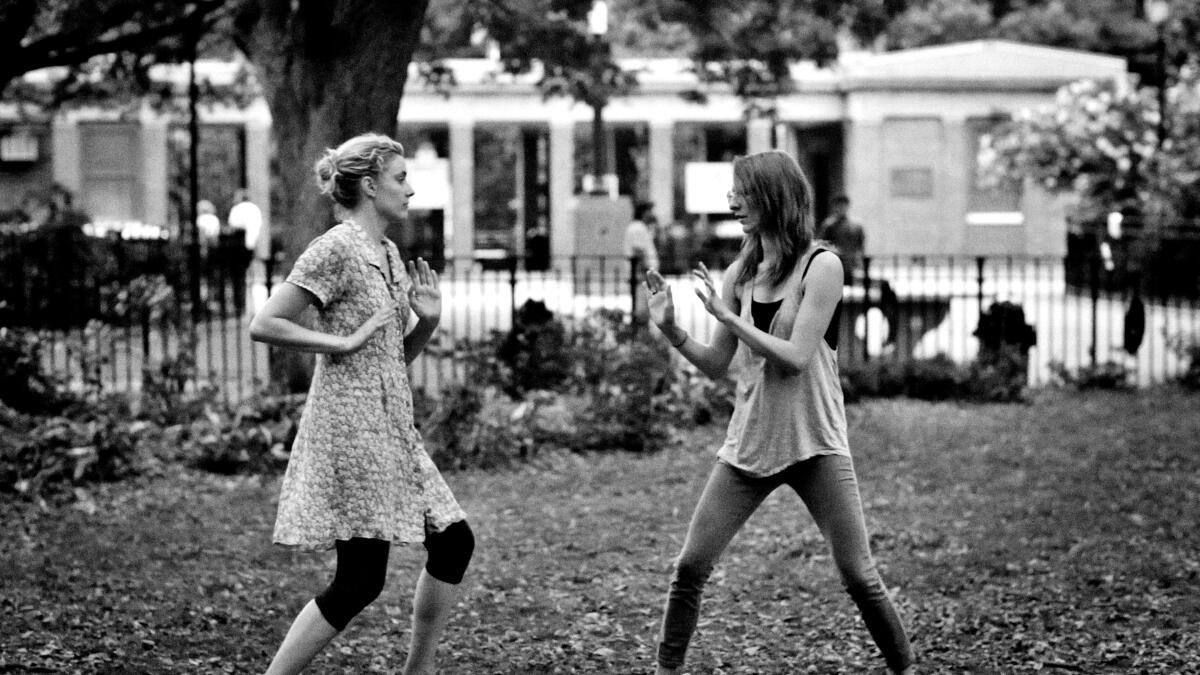
Greta Gerwig, left, and Mickey Sumner in the movie “Frances Ha.”
(Pine District Pictures)
The New Beverly will host a double feature of Noah Baumbach’s 2012 “Frances Ha” and Claudia Weil’s 1978 “Girlfriends,” two sharply insightful portraits of female friendship, on Friday, Saturday and Sunday.
“Frances Ha” was the first screenplay co-written by Baumbach and Greta Gerwig, both who would (of course) go on to collaborate on the script for the mega-successful “Barbie,” directed by Gerwig. In “Frances Ha,” Gerwig plays a 20-something woman coming to grips with life as an adult while struggling to accept the end of a friendship by which she has long defined herself.
In his original review of the film, Kenneth Turan declared it “Effortless and effervescent, ‘Frances Ha’ is a small miracle of a movie, honest and funny with an aim that’s true.”
Of Gerwig and Bambach’s collaboration, he noted, “For the actress, a quicksilver presence with a fluid face who couldn’t be more natural on screen, ‘Frances’ is an opportunity to build a character of unexpected complexity. For the director, having a gifted collaborator able to be so completely present adds a lightness his films have not always had and has made possible an irresistible command of the moment.”
I spoke to Baumbach and Gerwig about the film when it was premiering at film festivals in Telluride and Toronto.
“The writing of it and the acting of it were separate for me,” Gerwig said at the time. “The writing of it was such a huge thing, but the acting of it was scary. I really was worried I wouldn’t be right for it…. It didn’t feel like, ‘I wrote this great part, and I’m perfect for it.’”
“I can say I totally had Greta in my head,” Baumbach said. “I always thought, ‘I can’t wait for Greta to play this part.’”
“Girlfriends” stars Melanie Mayron as Susan Weinblatt, a young photographer in New York City, who finds her life starting to unravel when her best friend (Anita Skinner) moves out of the apartment they share together. The supporting cast also includes Christopher Guest, Bob Balaban and Eli Wallach.
Selected for the National Film Registry in 2019, the film was praised by Stanley Kubrick when it was originally released; he declared it “one of the very rare American films that I would compare with the serious, intelligent, sensitive writing and filmmaking that you find in the best directors in Europe.” Lena Dunham likewise sparked to the film, once recalling of her first viewing, “It felt eerie, in the true sense of the word, how familiar this film was to me. … I almost thought, ‘Have I seen this and been gently ripping it off for the last five years?’”
